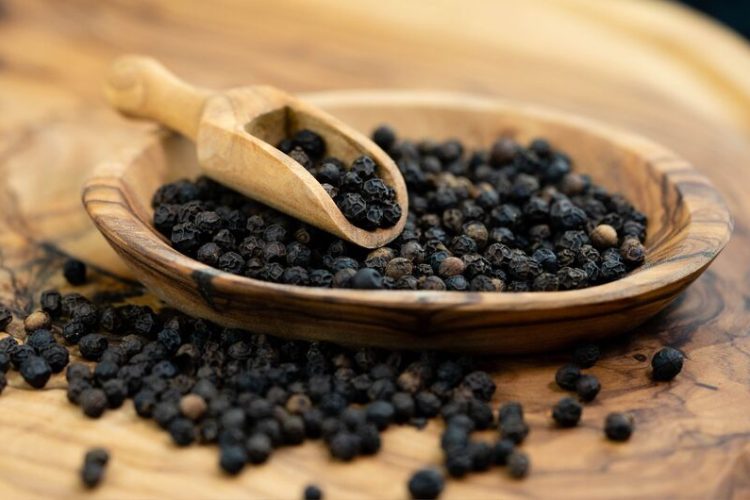How to import pepper from Vietnam? Being the largest global exporter by volume, Vietnamese pepper products have been shipped to nearly 100 countries across all corners of the world. First time importing agricultural goods? This article will walk you through the entire pepper sourcing process from Vietnam, from verifying suppliers to preparing phytosanitary certificates and what custom documents you need to submit for import approval. Read on to find out.
Is It Profitable to Import Pepper from Vietnam?
Vietnam has been consistently the largest exporter of pepper by volume since 2001. Currently, the country accounts for over 60% of the global pepper trade volume, followed by Brazil and Indonesia. In 2024, the export value of Vietnamese pepper reached approximately $1.4 billion USD, up around 45% compared to the previous year. From the beginning of 2025 to August, export revenue exceeded $1 billion USD.
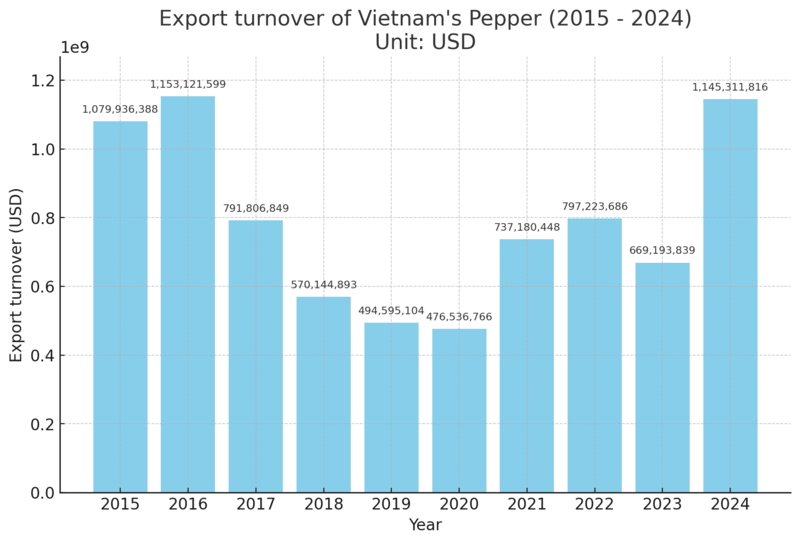
The key import market of Vietnamese pepper is the United States, accounting for 21.4% of total export value in the first 8 months of 2025. Demand from the EU and the Middle East is surging, and average export prices increased by 54.1% in the first half of 2025 year-on-year.
So, is it profitable to import pepper from Vietnam? Yes. Here are the real benefits:
- Lower price per ton: In June 2025, Vietnam’s black pepper export price averaged 4,789 US dollars per metric ton, while Brazil averaged 5,200 dollars and India over 5,400 dollars. This 8 to 12 percent cost difference gives you significant room to earn margin or stay price-competitive in retail and wholesale markets.
- Stable monthly availability: Vietnam’s harvest season runs from February to June, staggered across regions like Gia Lai, Đắk Lắk, Bình Phước, and Tây Ninh. This prevents seasonal gaps and helps buyers secure consistent shipments throughout the first half of the year.
- Grade variety: Vietnamese exporters offer multiple pepper types: black, white, steam-treated, organic, machine-cleaned, and double-cleaned. These meet standards for foodservice, industrial processing, and direct retail use in demanding markets like the US and Europe.
- Full export documentation: Most Vietnamese suppliers provide complete document sets: certificate of origin, phytosanitary certificate, fumigation report, certificate of analysis, commercial invoice, and packing list. This reduces customs delays and ensures fast clearance in ports with strict regulations.
- Zero to low import tax: Thanks to trade agreements like EVFTA, CPTPP, and RCEP, pepper from Vietnam qualifies for 0-5 percent import tax into the European Union, Japan, South Korea, and other participating countries. This lowers total landed cost compared to non-preferential origins.
Most Exported Types of Vietnamese Pepper
Vietnamese pepper is exported in several processed forms, primarily black pepper and white pepper. Among which, black pepper accounts for over 88 percent of total export volume, while white pepper accounts for approximately 12 percent.
1. Black pepper
Black pepper is made from unripe green berries that are sun-dried until black and wrinkled. It is the most common form used in global cuisine. In 2024, Vietnam exported 220,269 metric tons of black pepper worth 1.18 billion USD, making up over 88% of total export volume. Key country import markets include the United States, Germany, India, UAE, and the Netherlands.
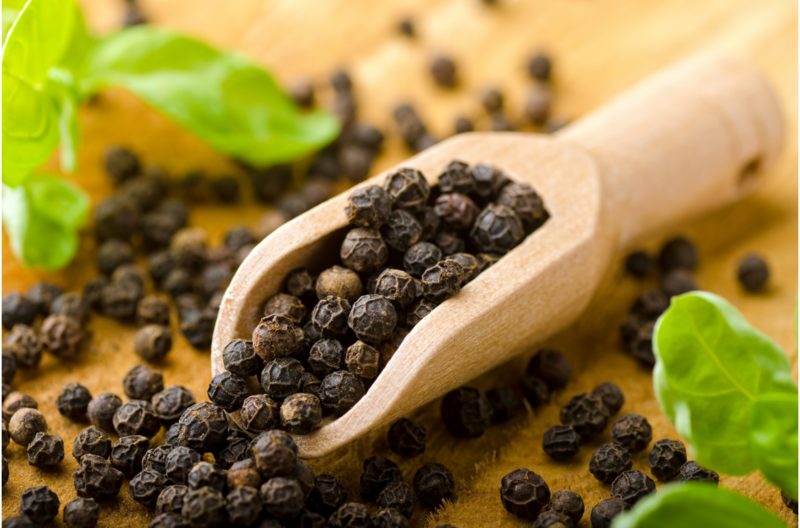
2. White pepper
In contrast to black pepper, white one is fully ripe berries with outer skin removed by soaking and drying. It has a milder flavor and lighter color, often used in sauces. In 2024, Vietnam exported 30,331 metric tons of white pepper, worth around 200.6 million USD. It represents roughly 12% of total exports, with Germany, Netherlands, China, and the United States being major importers.
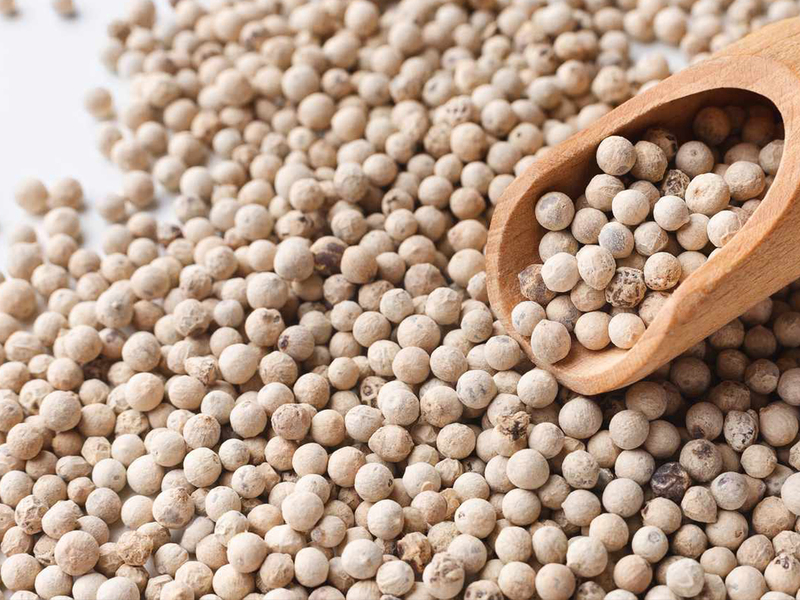
Vietnamese Proper Sourcing: Basic Steps
Importing Vietnamese pepper into global markets involves key steps such as selecting a reliable supplier, checking compliance, negotiating contract terms, arranging shipping, and clearing customs. Each stage ensures that the pepper meets both regulatory and business requirements.
Step 1: Finding a Reputable Supplier
Vietnam is the world’s largest exporter of pepper, so suppliers are abundant and easy to find. But the challenge is separating small traders from large, certified exporters. This makes due diligence essential.
You can find reputable suppliers through the following channels:
- International expos. There are major trade shows organized annually or biennially such as Vietnam International Sourcing Expo, SIAL China, or Anuga Germany, where Vietnamese pepper exporters participate every year. This is the best way to find verified and large-scale suppliers for agricultural commodities such as pepper. You are able to meet the suppliers directly and evaluate product samples on the spot. Yet, it will definitely require travel and participation costs.
- Online B2B platforms. This way is easier and faster to start. You can look on platforms like Alibaba, Global Sources, VinaSources, or the official Vietnam Pepper Association (VPA) exporter list. But since you cannot verify face-to-face, you must request samples and conduct strict checks before contract signing.
You can also work with well-known pepper suppliers in Vietnam. But keep in mind that not all suppliers are direct producers, some act only as traders, so you should always verify licenses and certifications before signing contracts. Below are some of the most recognized names in the market:
- Simexco Daklak. This is one of the top pepper exporters from the Central Highlands.
- Nedspice Vietnam. Nedspice is a subsidiary of Dutch group Nedspice, strong in processed pepper.
- Olam Vietnam. Olam is part of Olam Group, a leading global spice supplier since 1999.
In case this is your first time importing pepper from Vietnam and not so sure what to look for, we recommend you use the checklist:
- Check if the supplier is registered with the Vietnam Pepper Association (VPA) and holds an official export license from the Ministry of Industry and Trade
- Verify product quality standards. For pepper products, moisture content must be ≤ 13%, density ≥ 500 g/l, free of mold and impurities.
- Confirm the supplier can provide export documents. Necessary documents for pepper export are Certificate of Origin (CO), Phytosanitary Certificate, Fumigation Certificate, Certificate of Analysis, Packing List, and Commercial Invoice.
There are also some special requirements for importing to certain markets. We will list the specific documents, licenses, and certificates in the following section.
Step 2: Negotiating Contract Terms
Now, it’s time to work with suppliers to agree on price, grade, and packaging. In terms of price, minimum order quantities (MOQs) and average lead time for pepper export in Vietnam will usually be 1 full container load (17-19 metric tons) with 3-4 weeks lead time. For trial orders, some suppliers accept 1-2 tons (LCL shipments).
That said, these figures are just average benchmarks and the final terms will vary depending on the type (black or white pepper), the grade and the individual suppliers. Grade here refers to the density, cleanliness, and processing level. You will be familiar with this system when sourcing agricultural commodities such as pepper, coffee, and cashew nuts.
For quick reference, you can review the following table.
| Pepper Type | Typical Grade | Density (g/L) | Average Price FOB | MOQ | Lead Time |
| Black Pepper | FAQ (Fair Average Quality) | ~500 g/L | ~4,789 USD/ton | 1 FCL (17-19 tons) | 3-4 weeks |
| Black Pepper | Machine Cleaned 550 GL | ~550 g/L | ~4,900-5,000 USD/ton | 1 FCL | 3-4 weeks |
| White Pepper | Double Washed 620 GL | ~620 g/L | ~6,800-7,000 USD/ton | 1 FCL (17-19 tons) | 3-4 weeks |
| Trial Order | Black or White, mixed SKUs | — | FOB price + handling surcharge | 1-2 tons (LCL) | 4-6 weeks |
Oftentimes, Vietnamese suppliers are open to flexible payment terms (T/T advance, L/C at sight, or partial deposit). Buyers can negotiate by bundling multiple SKUs in one container, committing to seasonal contracts, or agreeing on long-term volume to secure better unit pricing.
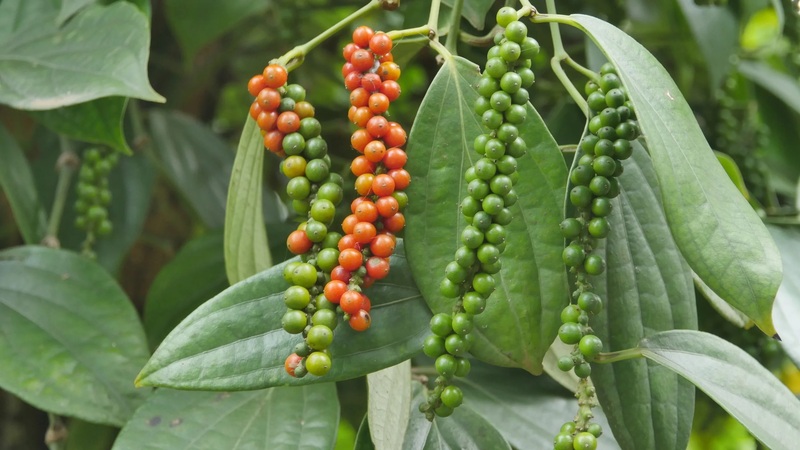
Notes: These prices are indicative of FOB Ho Chi Minh City and do not include inland transport, insurance, or customs clearance fees in the importing country. Normally, suppliers from Vietnam, including pepper exporters, will only handle export-side responsibilities such as local transport to port, export customs clearance, and loading onto the vessel. Costs such as freight, port handling, import duty, VAT, and inland delivery will add to the landed price.
Currency fluctuations and seasonal demand may also affect quotations. Buyers should always request a proforma invoice and updated price confirmation. It is also essential to carefully review the sales contract clauses on product specifications, delivery terms (Incoterms), and payment conditions before finalizing.
Step 3: Shipment and Customs Clearance
The final step is to arrange international shipping and customs clearance. For pepper products, Vietnam usually exports by sea freight through major ports such as Cat Lai (Ho Chi Minh City), Cai Mep-Thi Vai (Ba Ria-Vung Tau), and Hai Phong.
Transit time will depend on the destination country and the shipping route chosen. As noted above, FOB prices only cover export-side handling, so freight, insurance, and import customs costs must be calculated separately.
Below is a reference table for typical sea freight transit times and costs from Ho Chi Minh City to key markets:
| Destination Port | Transit Time (Sea) | Typical Ocean Freight (40ft Container, 2025) | Notes |
| Los Angeles (USA) | 25-30 days | ~2,800-3,200 USD | Port congestion may add delays |
| New York (USA) | 32-38 days | ~3,500-4,000 USD | Longer route via Panama Canal |
| Rotterdam (Netherlands) | 28-32 days | ~2,200-2,600 USD | Main EU entry for pepper |
| Hamburg (Germany) | 30-35 days | ~2,300-2,700 USD | Alternative EU hub |
| Dubai (UAE) | 18-22 days | ~1,500-1,800 USD | Middle East distribution hub |
These figures are calculated from Ho Chi Minh City (Cat Lai Port or Cai Mep–Thi Vai Port). For shipments departing from Hai Phong Port (North Vietnam), transit times may increase or decrease by around 3-5 days depending on the route and transshipment points.
Regarding customs clearance, the exporter is responsible for Vietnamese export procedures, including customs declaration, inspection, and export duty exemptions. As the buyer, you will be responsible for customs clearance, payment of import duties, and compliance with food safety regulations in your destination country.
How To Import Pepper From Vietnam: Key Regulations and Requirements
That’s about the essential steps for finding suppliers, negotiating contracts, and arranging shipment. Out of all these stages, the paperwork and regulatory compliance are usually the most complicated and time-consuming parts. As promised, this section will guide you on how to prepare to meet those requirements for easy Vietnamese pepper import. We will focus on the US and EU markets.
1. Import Documentation and Licenses Required
In both the US and EU, pepper is classified in the agricultural product category. As a result, you will need mandatory plant health and trade documents before customs clearance. These ensure the pepper shipment complies with international trade, food safety, and customs rules.
Main documents include:
- Phytosanitary Certificate: Issued by the Vietnamese Plant Protection Department. Its purpose is to confirm the shipment is pest- and disease-free. You can ask your exporter in Vietnam to arrange this before shipment. The latest valid template follows Appendix I of TT 33/2014/TT-BNNPTNT as amended by Circular 12/2025/TT-BNNMT.
- Certificate of Origin (CO): Issued by Vietnam Chamber of Commerce and Industry (VCCI) or authorized bodies to qualify for preferential tariffs. Under EVFTA, CPTPP, or GSP rules, it is the Vietnamese pepper supplier’s job to prove origin. The correct CO form is used according to the trade agreement (e.g. EUR.1, CPTPP Form) and must match the shipment details exactly.
- Fumigation Certificate: Provided by licensed fumigation companies in Vietnam to show the consignment was treated for insects. The exporter usually arranges this service with a certified fumigation company (e.g. VINACONTROL, FCC Control), and the cost is covered in export handling fees.
- Certificate of Analysis (COA)/Laboratory Test Report: Issued by accredited labs. It verifies moisture ≤ 13%, density ≥ 500 g/L, pesticide residues, and microbiological safety (e.g. Salmonella-free). You need to request suppliers to provide this. If not, you can commission independent labs in Vietnam such as Vinacontrol, SGS, or Bureau Veritas.
- Commercial Invoice: Standard trade documents issued by the exporter and shipping line. Check carefully to make sure that invoice details match the packing list, CO, and COA. Any incorrect or inconsistent info can delay customs clearance.
- Packing List: Standard trade document issued by the exporter. The list must accurately reflect item count, weights, and packaging. Discrepancies with invoice or COA may cause inspections.
- Bill of Lading: Standard trade document issued by the shipping line. It should contain the exact container numbers, shipment dates, and vessel details.
In case you are importing into the US, make sure to file an FDA Prior Notice electronically before the vessel departs. You can do this by submitting shipment details (product, quantity, origin, shipper, consignee) via the FDA Prior Notice System Interface (PNSI) or through Automated Commercial Environment/International Trade Data System (ACE). The FDA also places high importance on food safety compliance, which means you must carefully check the COA.
For the EU, black pepper usually is under stricter testing. Accordingly, import consignments of such products may be subject to increased official controls at EU border control posts under Regulation (EU) 2019/1793. Meeting the above requirements is usually sufficient, but you should still expect delays of 2-5 days and extra testing costs.
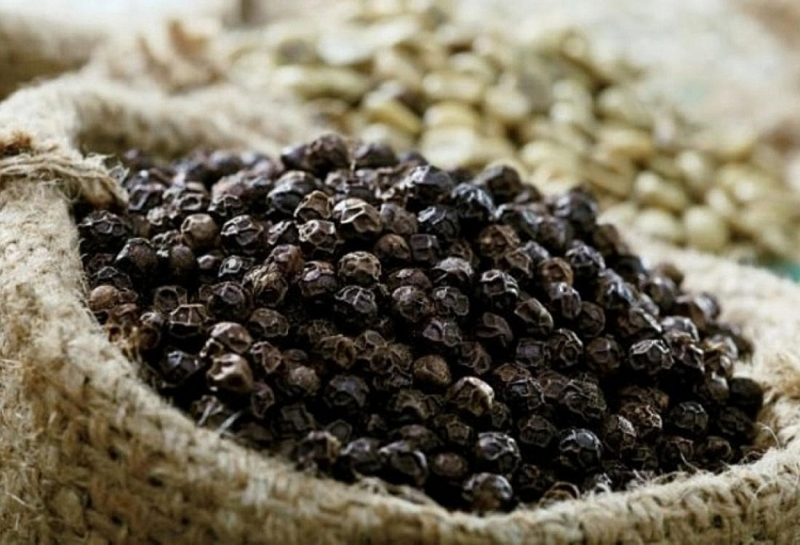
2. HS Codes, Duties, and Taxes When Importing Pepper from Vietnam
This section helps you estimate customs clearance and tax-related costs when importing Vietnamese pepper. These expenses directly affect the landed cost and profit margins.
Typically, customs systems classify pepper based on its form (whole or crushed/ground), rather than by grade (like 500GL or 550GL). The general HS Code root for pepper is 0904, which covers both black and white pepper.
However, each country uses specific sub-codes and duty rates under their own classification systems. For example, the United States uses the HTS (Harmonized Tariff Schedule) and the European Union uses the CN (Combined Nomenclature) Code under the TARIC system.
| Region | Info Type | Whole Pepper | Crushed or ground Pepper |
| US | HTS Code | 0904.11.0000 | 0904.12.0000 |
| Import duty | 46% (Under development) | 46% (Under development) | |
| Tariff | 10% | 10% | |
| EU | CN Code | 0904.11.00 | 0904.12.00 |
| Import duty | 0% | 0% | |
| Tariff | Zero | Zero |
3. Labeling and Packaging Standards
Next are the labeling and packaging requirements for exporting Vietnam pepper to international markets. Because pepper is a food product directly consumed by end users, labeling and packaging standards must comply with both food safety and consumer information regulations in the importing country.
General requirements include:
- The label must include the product name, lot or batch number, net weight in metric units, production date, and best-before or expiry date
- Country of origin must be clearly shown as “Product of Vietnam”
- The name and address of the manufacturer, packer, or exporter must be printed on the label
- Labels must be durable, legible, and printed in the official language of the importing country
- Inner layers and contact surfaces must be made from FDA-compliant or EU 1935/2004-compliant food-contact materials such as PE, PP, or BOPP film.
- If the pepper is certified organic, the organic certifier code and inspection body must be stated on the label
- Packaging must use laminated kraft paper or woven PP bags with inner moisture barriers. Water vapor transmission rate (WVTR) must be ≤10 g/m²/day. Bags must be heat-sealed or tightly stitched, able to withstand 75%+ humidity and 5–45°C temperature range during ocean shipping.
In countries like the U.S. and EU, additional requirements apply. Failure to meet these requirements can lead to customs rejection.
For the US market, you must make sure:
- The label shows net weight in both metric and U.S. customary units (e.g. 500g and 17.6 oz).
- Artificial flavors, colors, or preservatives, or a spice blend included in the product must be listed using FDA terms under 21 CFR §101.22.
- The label includes the name and address of a U.S.-based importer or distributor
- Packaging must comply with FDA 21 CFR 174–178 for food-contact materials.
The requirements for importing pepper from Vietnam to the EU market include:
- The label includes the name and address of a food business operator established in the EU.
- Mandatory label text must meet the 1.2 mm x-height rule.
- Organic pepper must show the certifier code and EU organic logo.
- Packaging in contact with pepper must comply with Regulation (EC) 1935/2004.
4. Customs Clearance for Pepper Imports from Vietnam
If all requirements above are met, you can confidently proceed with import. However, pepper from Vietnam has frequently been detained or rejected due to misinterpretation of documentation or overlooked procedural details.
From July 2025, under Circular 12/2025/TT-BNNMT, phytosanitary and food safety certificates must be issued by provincial-level authorities. Several EU-bound shipments have been delayed or rejected because the certificates were issued in incorrect formats or by non-recognized departments.
Ensuring that label, invoice, and certificate of origin are consistent, and verifying moisture content and absence of extraneousness also matter. Inconsistency between these factors is a frequent cause of customs holds.
Additionally, all certificates must carry the official stamp and signature of the issuing authority. EU and U.S. customs require these authentic stamps for acceptance.
VinaSources: Leading B2B Platform For Sourcing Pepper From Vietnam
That’s everything about how to import pepper from Vietnam. Overall, pepper sourcing should not be difficult. The bottom line is to gather the right documentation from your supplier/exporter to avoid shipment delays or holds.
In case you’re unsure which supplier to go with, VinaSources can help. As the leading B2B sourcing platform in Vietnam, we connect you directly with verified local pepper suppliers and exporters and support you with all the necessary documentation checks, verification, and logistics coordination. Shipping and logistics will be handled to ensure compliance with import regulations and safe delivery. Everything is transparent.
Currently, our catalog includes Vietnamese white pepper and black pepper. Feel free to browse and explore our product listings and submit an RFQ to get quotes directly from us.
